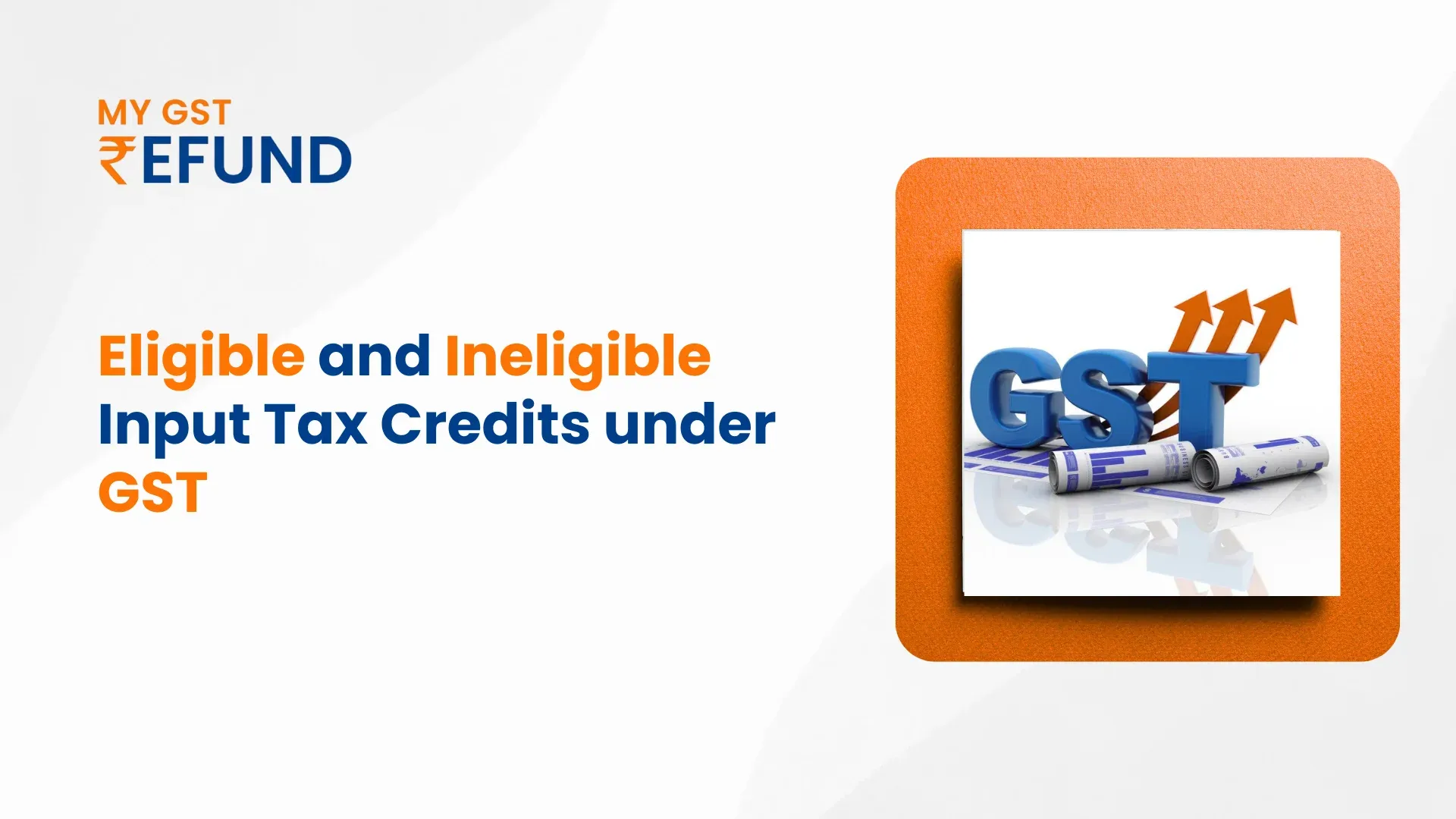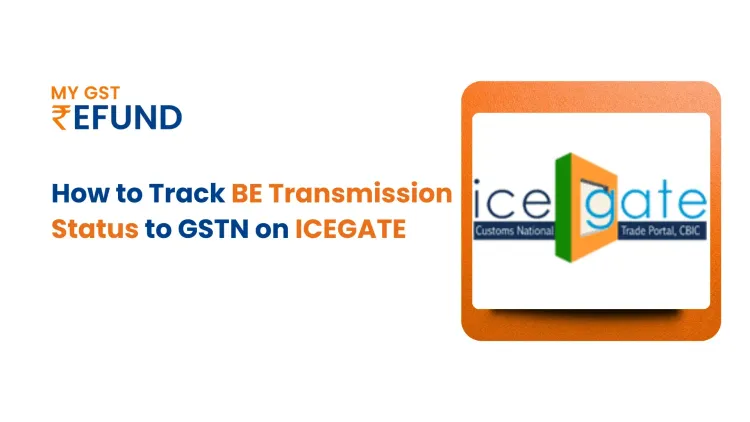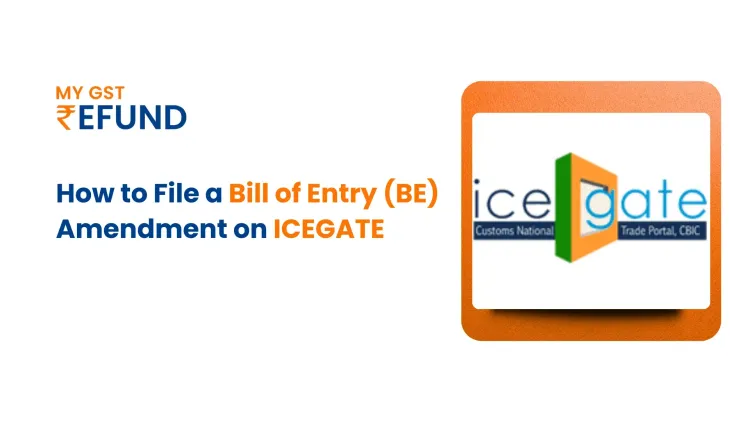Eligible & Ineligible ITC under GST: Cases & Conditions
Maximising cash flow and being compliant depend on properly managing your GST Input Tax Credit (ITC). This blog explains the guidelines, typical errors, and deadlines to help you claim the correct credits, identify eligible and ineligible input tax credits, avoid fines, and lower your tax obligations.
What is Input Tax Credit (ITC)?
Input Tax Credit (ITC) is a mechanism for tax paid on Input for the business that can be claimed as a deduction at the time of paying tax on output tax.
To qualify for ITC, the following conditions must be met:
1. The business must be registered for GST.
2. The business must have a proper tax invoice, debit note, or bill of entry.
3. The business must have actually received the goods or services.
4. The supplier must have paid the tax to the government.
5. The business must have filed all required GST returns.
6. The payment for goods or services, including tax, must be made within 180 days from the invoice date.
The benefits of ITC include:
1. Lower Tax Bills: The application of ITC enables businesses to pay less tax since they gain access to the tax funds that were already paid during previous purchases.
2. Better Cash Flow: Businesses will experience better financial liquidity when they pay lower taxes at the beginning.
3. No Double Taxation: Through Input tax credit systems, businesses have to pay tax only against value additions rather than prior input tax payments
4. Competitive Pricing: Lower costs can allow businesses to offer better prices to customers.
5. Encouragement to Follow Rules: ITC motivates businesses to keep accurate records and follow GST rules
Eligible Input Tax Credits under GST
General Eligibility
1. Business Use: ITC is only for business use.
2. Valid Documents: Must have a tax invoice or debit note.
3. Supplier Compliance: Invoice must be filed in GSTR-1 and appear in GSTR-2 B.
4. Receipt of Goods/Services: ITC can only be claimed after receipt.
5. Filing Returns: Must file GSTR-3B to claim ITC.
6. Installment Deliveries: Claim ITC after the last installment is received.
7. Payment to Supplier: Payment must be made within 180 days. If not, ITC must be reversed with interest.
8. Depreciation: No ITC if depreciation was claimed on capital goods.
9. Time Limit: ITC must be claimed within the financial year.
10. Common Credit Allocation: ITC must be split for taxable and exempt supplies.
11. Blocked Credits: No ITC on items like personal-use vehicles or beauty treatments.
Documents Required for Claiming ITC
To claim Input Tax Credit (ITC), the following documents are required:
1. Supplier Invoice: A tax invoice issued by the supplier for goods or services.
2. Debit Note: If the supplier has issued one to the buyer.
3. Bill of Entry: Required when importing goods.
4. Bill of Supply: If the amount is less than ₹200, or reverse charge applies.
5. ISD Invoice/Credit Note: Issued by the Input Service Distributor (ISD) as per GST rules.
6. Bill of Supply (Goods and Services): Issued by the supplier for goods, services, or both.
Ineligible Input Tax Credits under GST
Under Section 17(5) of the CGST Act, you cannot claim ITC on the following types of expenses, commonly referred to as Blocked Input Tax Credit.
1. Motor Vehicles: If used for personal purposes (except when used for resale, business, or required services).
2. Food and Beverages: For catering and similar services, unless required by law.
3. Membership Fees: For clubs or gyms.
4. Insurance: Health and life insurance, except if required by the government.
5. Construction: For building property.
6. Lost or Destroyed Goods: For damaged or gifted items.
You can only claim ITC on business-related expenses or those required by law.
Time Limit to Claim Input Tax Credit (ITC) under GST
Deadline to Claim Input Tax Credit (ITC) for FY 2024–25
As per the law (Section 16(4) of the CGST Act), businesses must claim their input tax credit for the financial year 2024–25 by whichever of the following dates comes first:
- 30th November 2025, or
- The date they file their annual return for the year 2024–25.
The claim must be made in the GSTR-3B return.
Important Dates to Keep in Mind
- The GSTR-3B return for October 2025 (the last one where you can report any missed ITC for the year) must be filed by 20th November 2025.
- If this deadline is missed, it can still be filed with a late fee up until 30th November 2025.
- After 30th November 2025, no ITC for FY 2024–25 can be claimed — even if you missed it by just a day.
So, check your books early and make sure everything is filed on time. It’s required to differentiate between eligible and ineligible input tax credits when filing your returns.
Common Mistakes and How to Avoid Them
1. Claiming Ineligible ITC: Don’t claim credit for items that aren’t eligible, like personal expenses, vehicles, or food and drinks. Be sure to check Section 17(5) of the CGST Act for the full list of eligible and ineligible input tax credits.
2. Mismatch Between GSTR-2A and GSTR-3B: Always cross-check your purchase records with GSTR-2A to make sure your ITC claims are accurate and avoid errors.
3. Failure to Reverse ITC When Needed: If you don’t pay your suppliers within 180 days, or if goods or services are used for non-business or personal purposes, an Input Tax Credit Reversal is required along with interest. Many businesses miss this step, leading to penalties and audit issues.
4. Late Filing of Returns: Make sure to file your returns on time. Late filing will lead to fines and interest, which can affect your financial situation.
5. Not Filing NIL Returns: If there are no transactions, you still need to file NIL returns to stay compliant and avoid penalties.
The MYGST Refund Blocked Credit Checker Tool helps businesses check and manage ineligible Input Tax Credit (ITC) under the GST system. It makes sure businesses follow Section 17(5) of the CGST Act. The tool reviews GSTR data, spots any ITC claims that can’t be claimed, creates reports to show compliance, and reduces mistakes and time spent on checking. The tool is simple to use, making ITC management easier for businesses. No more errors or penalties — try it free and stay ahead!
Key Takeaways
Input Tax Credit allows businesses to reduce their GST payable by claiming credit for tax paid on business purchases. To claim ITC, proper invoices, timely payments, and GST return filings are required. ITC cannot be claimed on personal expenses or if the compliance rules are not met. Hence, knowledge of eligible and ineligible input tax credits is important.
Frequently Asked Questions
1. What is ineligible for Input Tax Credit?
Under Section 17(5) of the CGST Act, you can’t claim credit for GST paid on personal vehicles, food, club fees, life/health insurance (unless required by law), building construction, or lost/damaged goods.
2. Who is eligible for Input Tax Credit?
As per the Section 16 of the CGST Act, any GST-registered business or Person can claim ITC if it receives goods/services, holds a valid tax invoice, pays the supplier within 180 days, and files GSTR-3B.
3. How to calculate the eligible ITC?
To calculate ITC, total the GST paid on business inputs. Then subtract any ineligible amounts under Section 17(5) or credits needing reversal. The rest is the credit you can claim.
4. What is the difference between blocked credit and ineligible credit?
Blocked credit (Section 17(5)) is permanently disallowed by law. Ineligible credit usually happens when a business breaks conditions in Section 16, like not paying on time or missing returns.
5. What is the new rule for Input Tax Credit?
According to Section 16(4), ITC for FY 2024–25 must be claimed by 30th November 2025 or the date of filing the annual return, whichever is earlier, via the GSTR-3B form.
Related Posts








